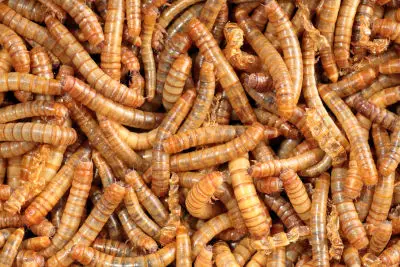What Happens to a Lizard When It Dies: Understanding the Natural Process
When a lizard dies, it may seem like a simple process of the body shutting down. However, there are many factors that come into play when a lizard passes away. Understanding what happens to a lizard when it dies can help pet owners better care for their animals and provide closure when they pass away.
One of the first things that happens when a lizard dies is rigor mortis. This is a natural process where the muscles in the body stiffen up and become rigid. It can make the lizard difficult to handle and may cause the limbs to stick out in awkward positions. Rigor mortis usually sets in within a few hours of death and can last for several days.
| Are these foods dangerous for your Beardie? | |
| Avacado? Click here to learn, from this guide, if this food is dangerous |  |
| Superworms? Click here to learn, from this guide, if this food is dangerous |  |
Another important factor to consider is what happens to the lizard’s body after death. Depending on the circumstances, the body may be left to decompose naturally or it may be disposed of by the owner. Understanding the proper way to dispose of a dead lizard is important for both health and environmental reasons.
Understanding Lizard Biology
Lizards are reptiles that belong to the family Lacertidae. They are cold-blooded animals, which means that their body temperature is regulated by the environment around them. Lizards are known for their ability to regenerate their tails, which is a unique feature that sets them apart from other animals.
Lizards have a unique respiratory system that allows them to breathe in air through their nostrils and mouth. They have a three-chambered heart that pumps blood throughout their body. Lizards also have a cloaca, which is a single opening that is used for excretion and reproduction.
Lizards have a wide variety of diets, depending on their species. Some lizards are herbivores, while others are carnivores or omnivores. They have a unique digestive system that allows them to extract nutrients from their food efficiently.
When a lizard dies, its body undergoes a process called decomposition. During this process, bacteria and other microorganisms break down the lizard’s body tissues and release nutrients back into the environment. The decomposition process can take several weeks or months, depending on the environmental conditions.
In conclusion, understanding lizard biology is important for understanding what happens to a lizard when it dies. Lizards have unique features that set them apart from other animals, including their ability to regenerate their tails and their unique respiratory and digestive systems. When a lizard dies, its body undergoes a natural process of decomposition, which releases nutrients back into the environment.
Decomposition Process
When a lizard dies, it goes through a process of decomposition. This process involves the breakdown of the lizard’s tissues and organs by microorganisms, such as bacteria and fungi. The decomposition process can take anywhere from a few weeks to several months, depending on the environmental conditions.
During the initial stages of decomposition, the lizard’s body will start to cool down and rigor mortis will set in. This is when the muscles become stiff and the body becomes rigid. As the body cools, the skin may start to turn a pale color and become dry and brittle.
Next, the lizard’s body will start to bloat as gases are produced by the microorganisms that are breaking down the tissues. The bloating can become quite pronounced and may cause the lizard’s skin to split open in some areas.
As the decomposition process continues, the lizard’s body will start to break down into smaller and smaller pieces. The bones and other hard tissues will take longer to decompose than the soft tissues, such as the skin and muscles.
Eventually, all that will be left of the lizard’s body are the bones and any other hard tissues, such as the teeth and claws. These will slowly break down over time and eventually become part of the soil.
It’s important to note that the speed and manner of decomposition can be influenced by a number of factors, including temperature, humidity, and the presence of other organisms in the environment. In some cases, the lizard’s body may be scavenged by other animals before it has a chance to fully decompose.
Impact on Ecosystem
When a lizard dies, it has a significant impact on the ecosystem in which it lived. Two key areas that are affected are scavengers and nutrient cycling.
Scavengers
Lizards are an important food source for many scavengers, such as birds, mammals, and other reptiles. When a lizard dies, these scavengers will consume its body, which can provide them with essential nutrients and energy. This helps to maintain a healthy balance in the ecosystem, as scavengers play an important role in removing dead animals and preventing the spread of disease.
Nutrient Cycling
When a lizard dies, its body begins to decompose, which releases nutrients back into the soil. These nutrients can be used by other plants and animals in the ecosystem, helping to support their growth and survival. This process is known as nutrient cycling and is an essential part of maintaining a healthy ecosystem.
In conclusion, the death of a lizard can have a significant impact on the ecosystem in which it lived. Scavengers rely on dead lizards for food, while nutrient cycling helps to support the growth and survival of other plants and animals.
Role of Temperature and Humidity
When a lizard dies, the role of temperature and humidity is crucial in determining the rate of decomposition of the body. The higher the temperature and humidity, the faster the decomposition process occurs. This is because the bacteria and fungi responsible for breaking down the tissues are more active in warm and moist conditions.
In addition, the temperature and humidity can also affect the preservation of the lizard’s body. If the temperature is too low, the body may freeze, which can slow down the decomposition process. On the other hand, if the temperature is too high, the body may dry out, which can also slow down decomposition.
It is important to note that the role of temperature and humidity can vary depending on the species of the lizard and the environment in which it lived. For example, desert-dwelling lizards may be better adapted to high temperatures and low humidity, while rainforest lizards may require more moderate conditions.
Overall, understanding the role of temperature and humidity in the decomposition process of a lizard can provide valuable insights into the natural processes that occur after death.